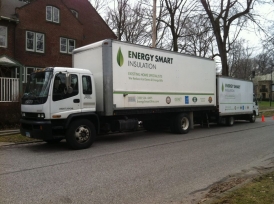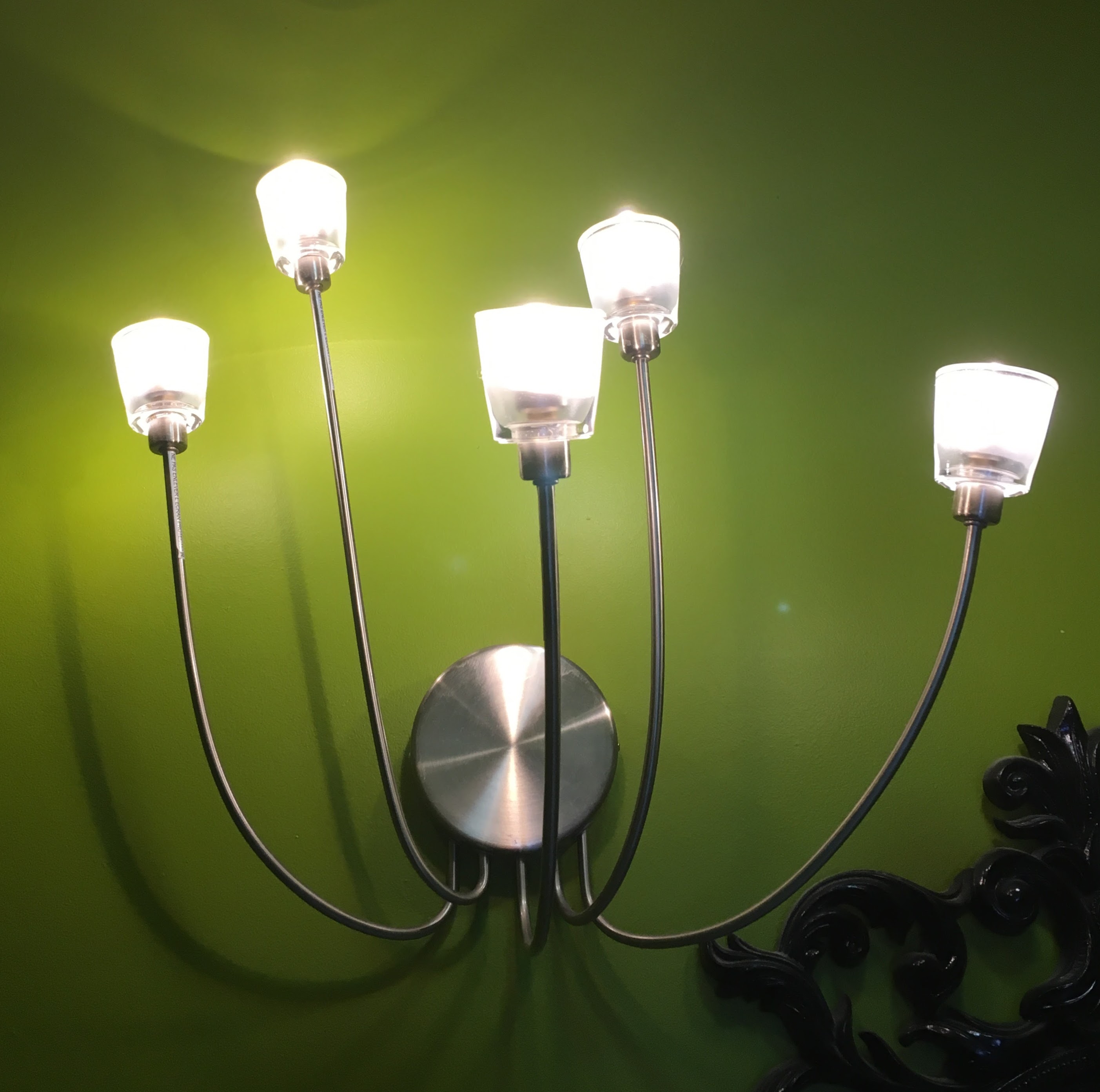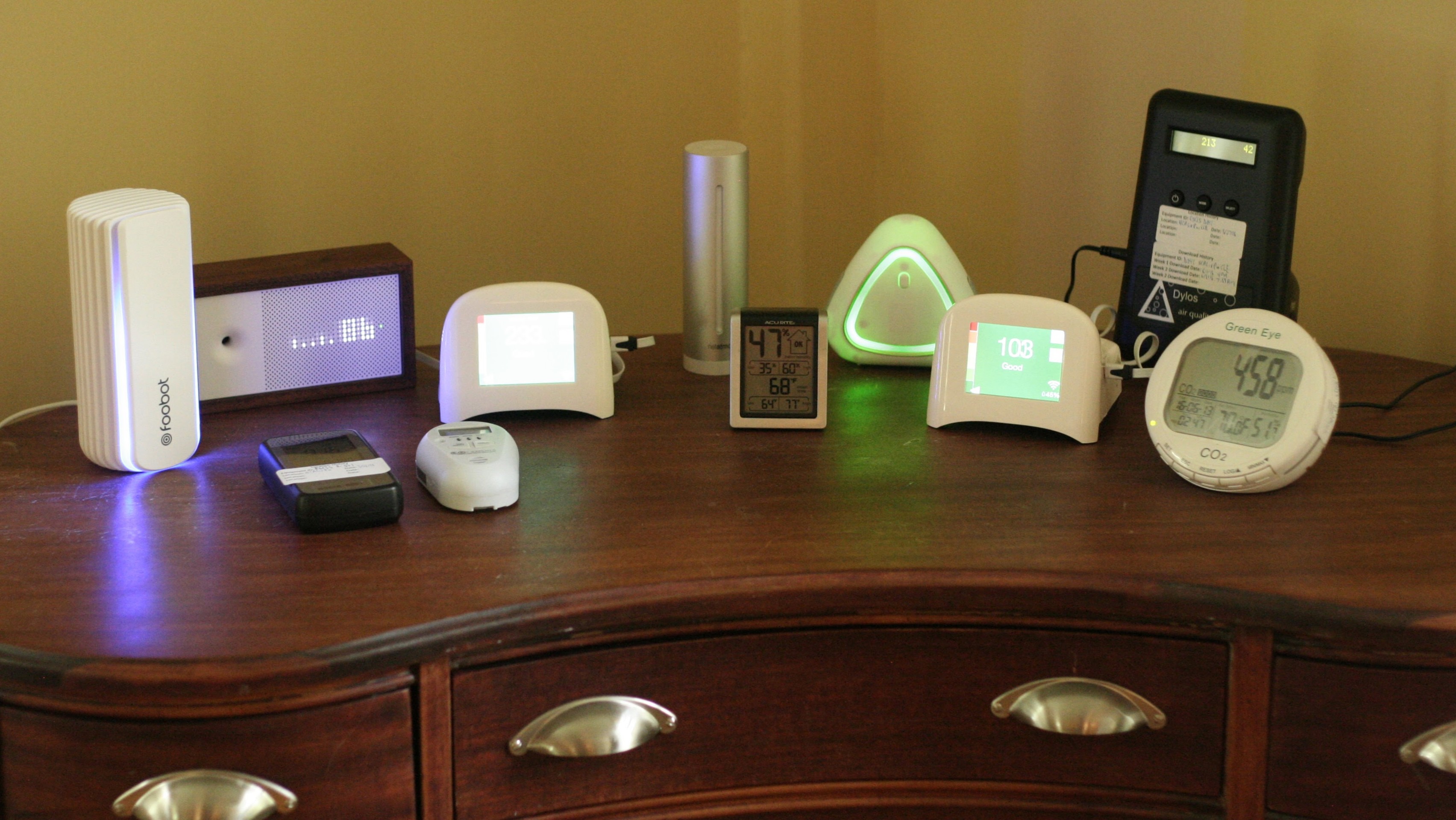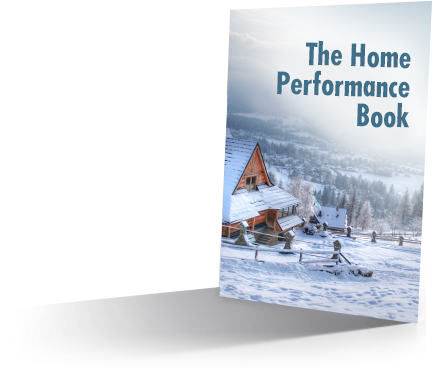A high performance home is super comfy, very healthy, doesn't have moisture problems, and is inexpensive to operate.
What is Home Performance about?
It’s about creating elegant balance within the system of systems that is your home. When you do the right things in the right combinations, magic happens.
Conversely, if you stop short of solving a problem at the root not only have you wasted the time and money on that attempt, but you may have caused another problem like mold in the attic after insulating, but failing to air seal. Then you not only have to remove all the insulation, but now you have a mold remediation job on your hands, and only then can you air seal properly and reinsulate. We’ve fixed this exact problem a number of times.
We work hard to keep interactions in mind as we design your solution packages (more on that later.) Here are the buckets, or tenets, that the problems we solve fall into:
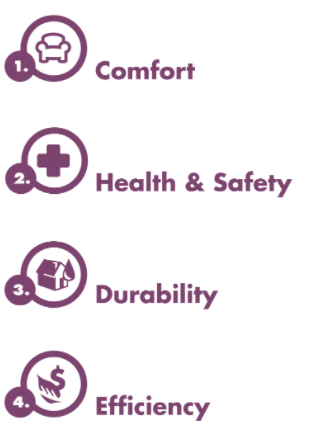
The four tenets of Home Performance that work together in interrelated ways. Let’s dig in.
This is THE KEY. If your home is comfortable due to good planning and design, the other 3 tenets just fall in line like dominoes. Usually we design with comfort as our first goal.
It’s much more complicated than you might expect, though. When you think comfort, you probably think of temperature. You would be correct, but only partly correct. Humidity levels, mean radiant temperature, air flow and velocity, indoor air quality, noise, vibration, and odors all play a part in comfort as well. The whole package of comfort is known as Indoor Environmental Quality, or IEQ. You can read more about it at our IEQ page.
As our homes have become more airtight over the last 60-70 years they have begun to hold more and more of the bad things in that exist inside our homes. While its not true that a house has to breathe, its occupants do.
PRIMARY FOCUS = COMBUSTION SAFETY
Most homes have ‘combustion appliances’ which burn some sort of fuel. The typical ones are furnaces, water heaters, stoves/ovens, gas dryers, and fireplaces. You may have others as well.
All of these appliances have the potential to emit carbon monoxide into your home, which at low levels is not healthy and at high levels is deadly. Combustion safety testing is part of any true energy audit.
SECONDARY FOCUS = INDOOR AIR QUALITY
Cleaners, candles, vacuums, new furniture and carpet, pets, paint, chemicals, building materials and many other sources contain nasty chemicals that evaporate into the air. These can directly cause illnesses and cancer, or indirectly weaken us, making us more prone to colds and flu.
Home Performance upgrades help reduce these issues when designed and implemented correctly. For more information on IAQ, read our IAQ page.
Do you know what kills most buildings? Water. Sometimes it’s liquid water rotting out building materials, sometimes it is vapor water wetting various building materials and giving mold a nice place to grow. Either way, water reduces the durability of your home in a bunch of ways. Whether it is a wet basement, a roof leak, mold in the attic, basement, or crawlspace, or any other area – Home Performance design considers both liquid and vapor moisture management as well source control. Source control is stopping moisture where it came in in the first place. See our mold and moisture page for more info.
This is what many people think of first when they talk to us. You’re going to save us money, right? Well yes, but it is typically a result of a good Comprehensive Home Performance Upgrade, not a primary goal. Energy efficiency is an outcome of solving these other problems using principles of comprehensive home performance.
If you control the air, heat, and moisture movement necessary to achieve comfort, durability, health & safety (the other 3 tenets), efficiency just tags along like a happy puppy. With computer modeling tools we make predictions of energy savings as part of our process (and we follow up to see how close we were and keep our aim sharp).
While we love efficiency, one of the other three tenets is usually our first goal.
Want to learn more about Home Performance? We’re pretty biased, but we think this guide is super useful:
Interactions
All 4 of the Tenets of Home Performance are highly interrelated. If you affect one, you likely affect at least one other at the same time. Here are a few examples:
1. Icicles and Ice Dams – (This problem has all 4 tenets.)
Typically when a home has icicles, it is leaking a lot of heat, so that involves efficiency. The water being created by melting snow is likely causing damage somewhere, so that involves durability. Those moisture problems could be causing mold somewhere, which touches health and safety. Finally, if a lot of heat is leaking out of the house, there are likely rooms that are too hot or cold because of it, so comfort is also affected.
2. Carbon Monoxide or Backdrafting
Often when only the water heater goes into the chimney, it is likely to backdraft, or pull air down the chimney rather than up, which can lead to carbon monoxide coming into the home. This can be caused by a whole house fans, poorly designed ducts, or numerous other problems. Backdrafting is primarily a health and safety issue. What might not be apparent, though, is that the combustion byproducts condense partway up the chimney, which can allow acid to leach into the chimney, corroding it and shortening it’s life, which is a durability issue. A backdrafting water heater is also likely not running as well as it could be, so it is an efficiency issue.
3. Mold In the Attic
This is pretty common in homes built after 1960 because we started using materials that are more attractive to mold. Mold is obviously a health and safety issue. You might be surprised to learn it is commonly also indicator of efficiency, durability, and comfort issues
For example; mold in the attic is often caused by air leaks from the house to the attic. These air leaks carry warm, humidified air from the house into the attic where it condenses on the cold roof deck.
Mold is also often indicative of comfort problems because air leaks lead to drafts.
Lastly, mold is a durability issue because the life of that material is being negatively affected by the mold. Roof decks get soft and need to be replaced earlier, along with the roof shingles. Another way it is a comfort issue is stress. Once you know about a failing roof it is likely to make you a bit anxious.
With Interactions, Design Is Critical
We could mention a ton more but does it begin to make sense that everything in your home is interconnected?
You may have also noticed us mention that a thoughtfully designed solution is very important. Just as a doctor wouldn’t diagnose a problem in 5 minutes (sometimes they want lots of tests), or prescribe the same diet and exercise plan to everyone, so your home needs a custom tailored plan that keeps its individual problems in mind, as well as the myriad interactions that might occur due to the upgrades.
First, Define the Problems!
Yeah, that sounded a little sales-y. We don’t mean it to. Einstein said if he had an hour to solve a problem he would spend 55 minutes defining it and 5 minutes on the solution. We take that to heart.
Like solving any complex problem, it’s best to first step back, define the problem(s) and account for as many variables as possible. The solutions almost present themselves at this point.
After building a list of improvements we develop solution packages that balance all of those variables as well as possible according to the 4 Tenets of Home Performance, and we attempt to do this within a budget that you are comfortable with.
See, there’s comfort again!










